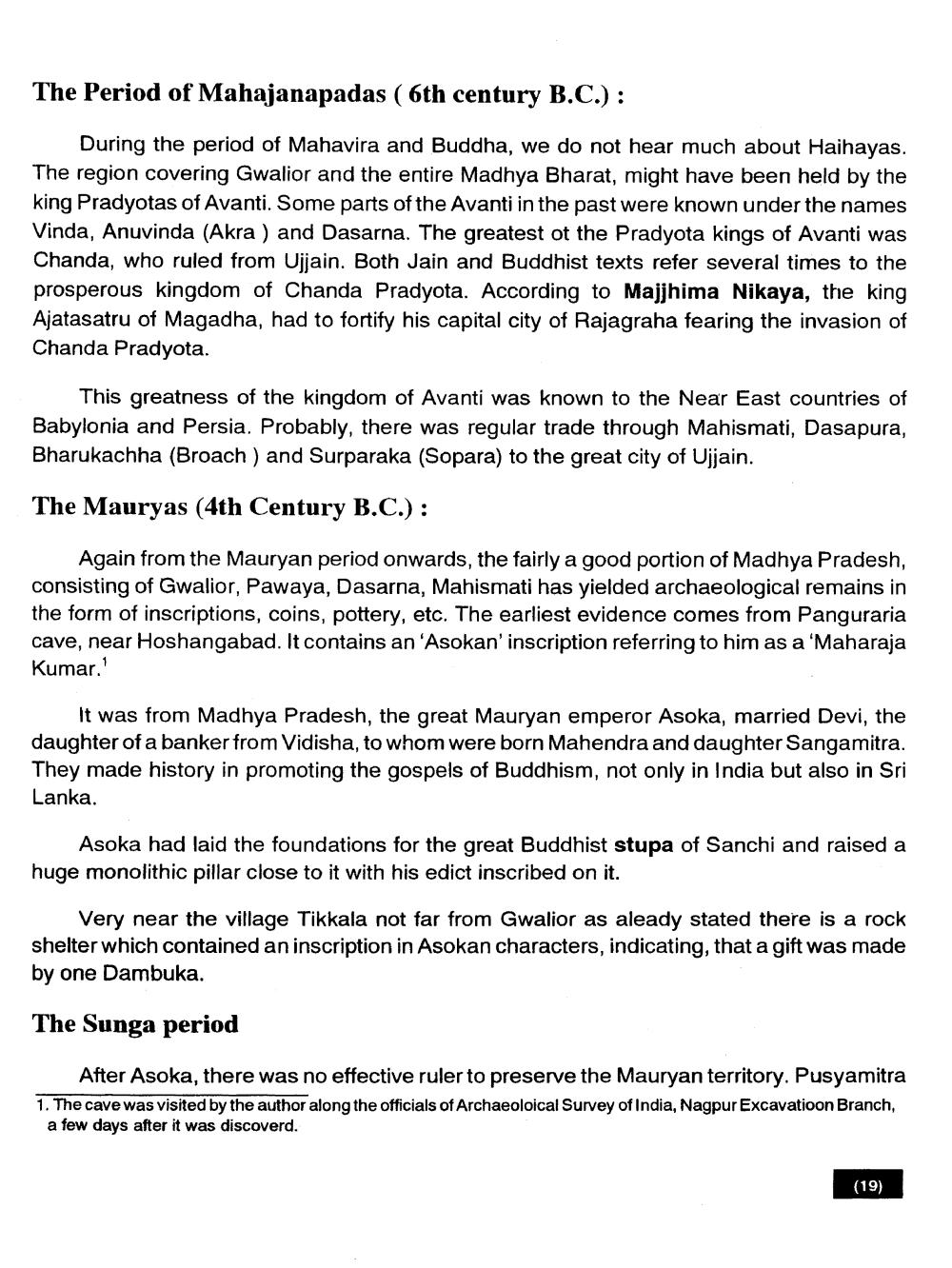________________
The Period of Mahajanapadas ( 6th century B.C.):
During the period of Mahavira and Buddha, we do not hear much about Haihayas. The region covering Gwalior and the entire Madhya Bharat, might have been held by the king Pradyotas of Avanti. Some parts of the Avanti in the past were known under the names Vinda, Anuvinda (Akra) and Dasarna. The greatest ot the Pradyota kings of Avanti was Chanda, who ruled from Ujjain. Both Jain and Buddhist texts refer several times to the prosperous kingdom of Chanda Pradyota. According to Majjhima Nikaya, the king Ajatasatru of Magadha, had to fortify his capital city of Rajagraha fearing the invasion of Chanda Pradyota.
This greatness of the kingdom of Avanti was known to the Near East countries of Babylonia and Persia. Probably, there was regular trade through Mahismati, Dasapura, Bharukachha (Broach ) and Surparaka (Sopara) to the great city of Ujjain.
The Mauryas (4th Century B.C.) :
Again from the Mauryan period onwards, the fairly a good portion of Madhya Pradesh, consisting of Gwalior, Pawaya, Dasarna, Mahismati has yielded archaeological remains in the form of inscriptions, coins, pottery, etc. The earliest evidence comes from Panguraria cave, near Hoshangabad. It contains an 'Asokan'inscription referring to him as a 'Maharaja Kumar.'
It was from Madhya Pradesh, the great Mauryan emperor Asoka, married Devi, the daughter of a banker from Vidisha, to whom were born Mahendra and daughter Sangamitra. They made history in promoting the gospels of Buddhism, not only in India but also in Sri Lanka.
Asoka had laid the foundations for the great Buddhist stupa of Sanchi and raised a huge monolithic pillar close to it with his edict inscribed on it.
Very near the village Tikkala not far from Gwalior as aleady stated there is a rock shelter which contained an inscription in Asokan characters, indicating, that a gift was made by one Dambuka.
The Sunga period
After Asoka, there was no effective ruler to preserve the Mauryan territory. Pusyamitra 1. The cave was visited by the author along the officials of Archaeoloical Survey of India, Nagpur Excavatioon Branch, a few days after it was discoverd.
(19)




